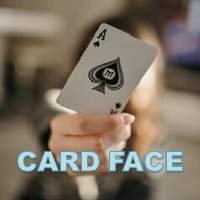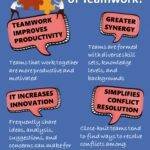
The Card Face Exercise
Card Face is a powerful exercise and dynamic experience that explores topics of diversity, cultural norms, valuing others, and inclusion.
Randomly distribute one card from a playing deck of cards to each person. Important – instruct people to not look at their card.
Ask each person to place this card on their forehead so that it faces other people. When ready, invite everyone to start mingling around the room, holding their card on their forehead at all times.
As they interact, instruct everyone to engage with and treat all others based on the face value of the card on that person’s forehead. All interaction must remain silent, ie no verbal forms of communication, but gestures are permitted.
Gestures are absolutely permitted, but no individual should ever explicitly communicate the actual value of another’s card. Initially, there may be a little confusion, but here are some typical behaviours you will likely see exhibited:
- The royalty (picture) cards attract a lot of positive treatment, such as bows, high-fives and smiles.
- The lowest value cards are often dismissed by others, perhaps even attracting dirty-looks, thumbs-down and the occasional uncomfortable frown.
- The middle-value cards are mostly ignored, or attract an array of confusing signals from others, some good, some bad. They may attract a ‘so-so’ hand gesture or a shrug of one’s shoulders.
- Sometimes, cards of a similar value start to hang-out together.
Stage 2
After 1 to 2 minutes of interaction, stop the activity and remind people to not look at their cards (yet.) Ask every person to divide into one of three groups – high-value cards stand to one side, low-value cards stand on the other side, and middle-value card holders stand in between.
Naturally, this division is based entirely on their perception of the value of their cards (they still have not looked at their own card.) Once everyone has associated with a grouping, take a moment for your group to observe the positioning of all others, and then ask everyone to look at their (own) cards for the first time.
Invite your group to process what just happened to gain more value and teachable moments from your experience.
Moment of Reflection
- What were some behaviours that you saw or were demonstrated towards you that lead you to believe you had a low/middle/high-value card?
- How long did it take you to realise that you had a low/middle/high-value card?
- After you realised the probable value of your card, did it influence the way you played the game?
- What were some specific behaviours you demonstrated towards others because of the value of your card?
- How did it feel to be a royalty card?
- How did it feel to be a lower-numbered card?
- What behaviours did you observe during the activity?
- How were you treated?
- Did you notice any secluded groups forming?
- How did it feel to be left out? How did this influence your thinking and behaviours? Be specific.
- How is this activity like everyday society? Give examples.
The topics of this publication: integration, diversity, reflection, critical thinking, interactions, self, empathy, stereotypes, non-verbal communication, observation skills


